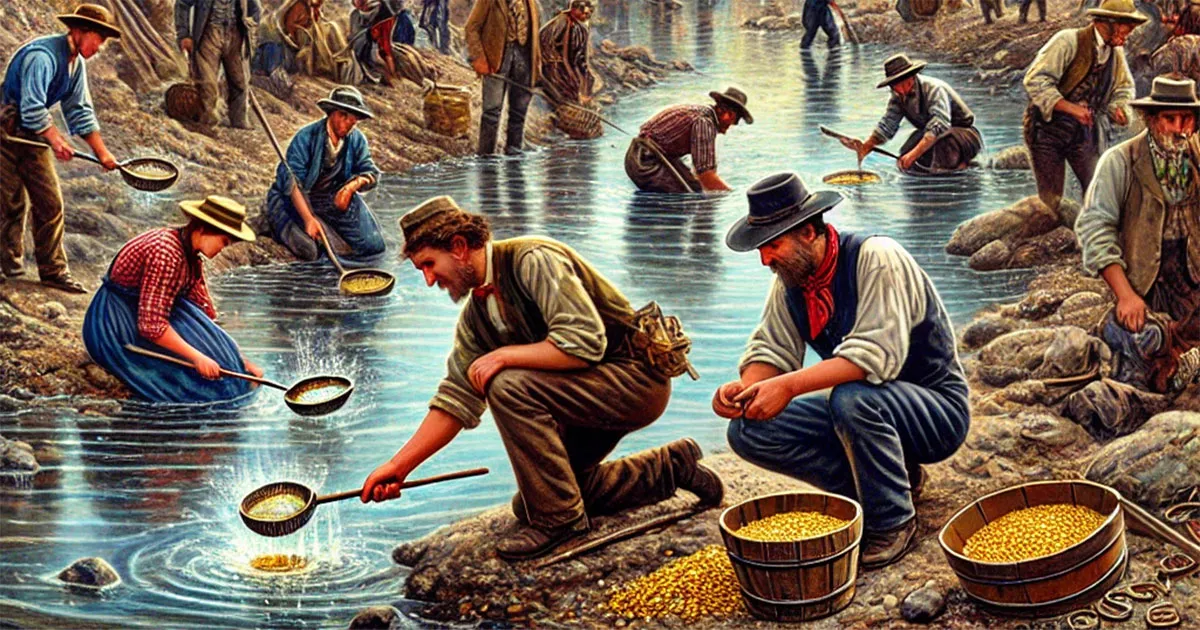

The year was 1848, and America was buzzing with the promise of wealth and adventure. Gold had been discovered at Sutter's Mill in Coloma, California, and the news spread like wildfire. This discovery sparked the California Gold Rush, a period of feverish excitement and massive migration as thousands of hopeful prospectors, known as "forty-niners," flocked to the Golden State in search of fortune.
It all began when James W. Marshall, a carpenter working for John Sutter, found shiny metal in the American River. This seemingly small event quickly turned into a frenzy as word got out. Newspapers across the country headlined the discovery, and soon, people from all walks of life packed their bags and headed west. Farmers, doctors, lawyers, and even former soldiers left their jobs and families behind, driven by the allure of gold.
The journey to California was anything but easy. Prospectors traveled by land and sea, enduring grueling conditions. Those who chose the overland route faced harsh weather, rough terrain, and the threat of disease. Others opted for the sea route, sailing around Cape Horn at the southern tip of South America or crossing the Isthmus of Panama, a shortcut but still fraught with peril.
Despite the dangers, the dream of striking it rich kept them going. They arrived in California with pickaxes, shovels, and dreams of finding the motherlode.
Life in the goldfields was tough and unpredictable. Miners set up makeshift camps near rivers and streams, where they panned for gold. This involved swirling water and sediment in a pan, hoping to catch glimpses of gold flakes. Some miners found success, while others left empty-handed.
The mining camps were rough places, filled with men hoping to strike it rich. They were also incredibly diverse, with people from all over the world, including Europe, Asia, and Latin America. This melting pot of cultures brought both cooperation and conflict as people vied for the same precious resource.

As more people arrived, small camps turned into bustling boomtowns. San Francisco, in particular, saw explosive growth, transforming from a sleepy village into a major port city. The influx of people and money spurred the development of infrastructure, businesses, and services. Saloons, shops, and entertainment venues sprang up, catering to the needs of the miners.
However, boomtowns also had their dark sides. Lawlessness was rampant, with gambling, drinking, and violence common. Vigilante justice often replaced formal law enforcement, and disputes over claims sometimes turned deadly.
The California Gold Rush had profound effects on the United States. Economically, it contributed to the nation's wealth and accelerated its westward expansion. The influx of people helped California achieve statehood in 1850, just two years after the discovery of gold.
Socially, the Gold Rush brought together a diverse array of people, though it also led to the displacement and suffering of Native American populations. Environmental impacts were significant too, with rivers and landscapes altered by mining activities.
By the mid-1850s, the easy-to-find gold was largely gone. Mining became more industrialized, requiring significant investment and equipment. Many individual prospectors left, but the legacy of the Gold Rush lived on. It had transformed California and left an indelible mark on American history.
The California Gold Rush was a defining moment in American history, a time of adventure, opportunity, and transformation. It drew people from all over the world, forever changing the social and economic fabric of the United States. Today, the legacy of the forty-niners lives on, reminding us of a time when the dream of striking it rich led many to the Wild West.